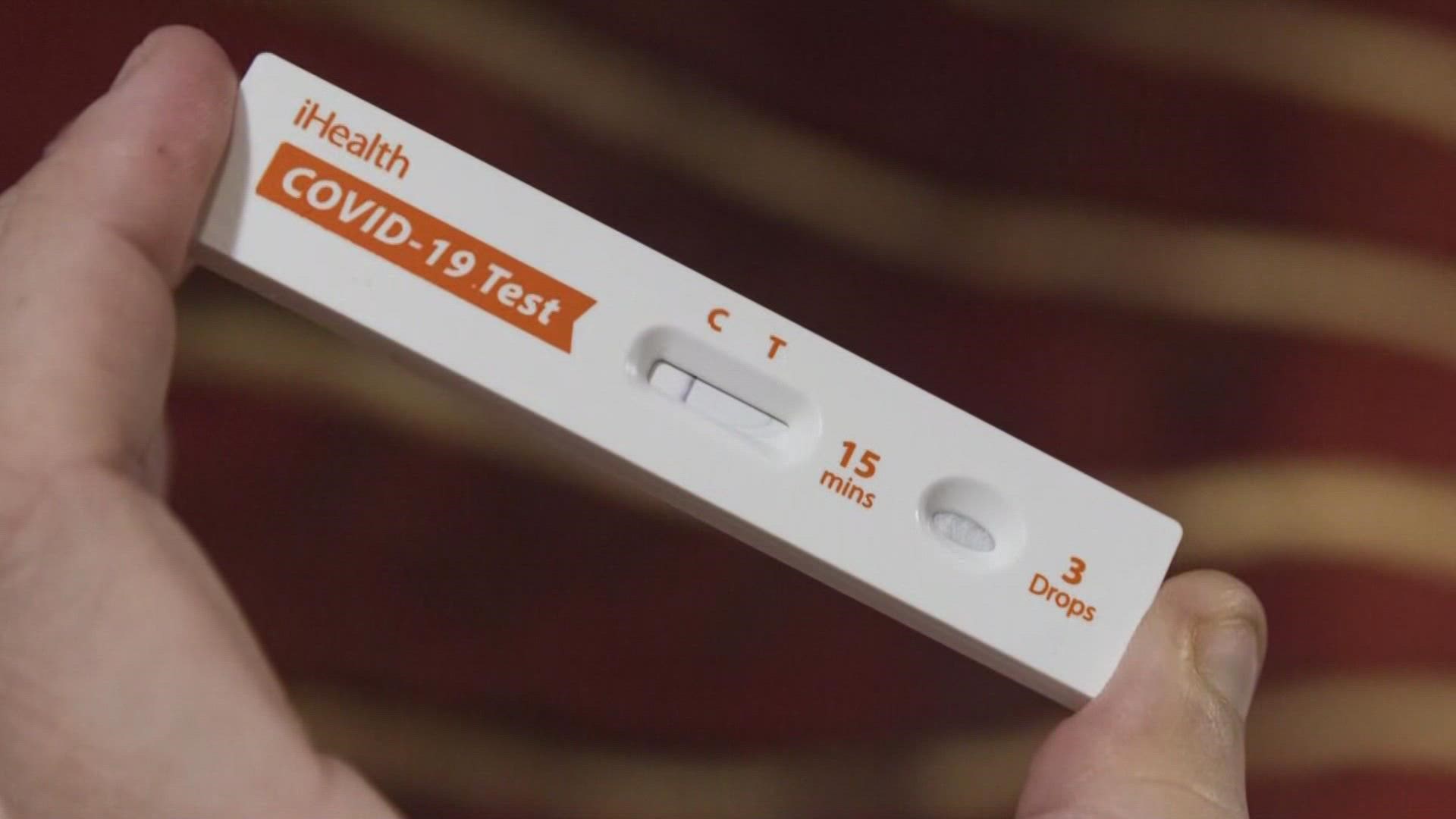KING COUNTY, Wash. — New and highly transmissible COVID-19 variants have King County health leaders “actively considering” bringing back a mask mandate.
County health officials said at a briefing Thursday that COVID-19 cases are higher than the peak of last year's delta wave.
Health leaders believe these case numbers are likely an undercount because many people use rapid at-home COVID-19 tests, which are rarely included in official numbers.
"We are actively considering if, and when, additional [mask] mandates may be needed," said Dr. Jeff Duchin, health officer for Public Health – Seattle & King County. "And I'm really encouraging everyone now, to please, let's make sure we've done all we can on a voluntary basis before we have to go there."
Data from the Centers for Disease Control and Prevention (CDC) calculated July 14 shows 14 Washington counties have COVID-19 community levels rated “high,” meaning they have had 200 or more new COVID-19 cases per 100,000 people in the last seven days, or they’ve had more than 20 new COVID-19 hospital admissions per 100,000 people within a seven-day period.
According to CDC data, Adams, Benton, Chelan, Columbia, Douglas, Franklin, Grant, King, Lincoln, Skagit, Snohomish, Spokane, Thurston and Walla Walla counties have “high” COVID-19 community levels. The CDC recommends people in areas with high COVID-19 community levels wear masks indoors regardless of vaccination status.
While CDC data shows King County having “high” COVID-19 community levels, data on King County’s dashboard updated on July 15 shows lower numbers, which would put the county within “medium” transmission levels by the CDC’s definition.
“Our local hospital rate at any given point may differ from CDC’s because our data quality team removes cases among people who are hospitalized for other reasons, but also have COVID,” said Public Health – Seattle & King County spokesperson James Apa.
The omicron subvariant BA.5 is behind the rise in coronavirus cases in Washington state and across the country. It's now the dominant strain of COVID-19 in Washington and throughout the U.S., according to public health officials and new data released Wednesday.
The omicron subvariant BA.5 is behind the rise in coronavirus cases in Washington state and across the country.
It's now the dominant strain of COVID-19 in Washington and throughout the U.S., according to public health officials and new data released Wednesday.
Researchers estimate it to be as much as four times more resistant to vaccine antibodies than previous omicron variants.
Dr. Pavitra Roychoudhury of the University of Washington Virology Lab believes now is not a time to let your guard down.
“I am quite concerned by the fact that the numbers of cases are still so high, the percent positivity rate for samples that are coming into our lab is still well over 20%, and it has been above 20%, or around 20%, for over a month now,” Roychoudhury said. "That tells me that there's this sustained level of community transmission that's going on.”
Duchin said King County is doing well with vaccination rates – with 77.9% of people over five receiving two doses – but not enough people are getting the booster shot. According to the CDC, 54.9% of fully vaccinated people have gotten booster shots in Washington state.
The CDC said people over 5 years old are eligible for one booster shot. People 50 and older or people 12 and older who are also immunocompromised are eligible for a second booster shot.
Updated booster shots in the fall?
U.S. regulators told COVID-19 vaccine makers on June 30 that any booster shots tweaked for the fall will have to add protection against the newest omicron relatives.
The Food and Drug Administration (FDA) said the original vaccines would be used for anyone still getting their first series of shots. But with immunity waning and the super-contagious omicron family of variants getting better at dodging protection, the FDA decided boosters intended for fall needed an update.
The recipe: Combination shots that add protection against the omicron relatives named BA.4 and BA.5 to the original vaccine.
It's still a gamble as there's no way to know if an omicron relative still will be a threat as cold weather approaches or if a newer mutant will take its place. And the current Pfizer and Moderna vaccines still offer strong protection against COVID-19's worst outcomes as long as people have gotten already recommended boosters.
But the combination approach, what scientists call “bivalent” shots, would allow the boosters to retain the proven benefits of the original vaccine while adding to its breadth of protection. It’s a common vaccine strategy: Flu shots, for instance, can protect against four influenza strains and are tweaked annually depending on what's circulating.
The FDA’s decision comes after its scientific advisers recommended any boosters for a fall campaign should contain some version of omicron but left undecided whether it should be the omicron mutant that caused last winter’s surge or the genetically distinct relatives that have replaced it.
Pfizer and Moderna already were brewing and testing boosters updated against the first omicron mutant in anticipation of an October rollout. They found adding the extra protection was safe and spurred the production of more omicron-fighting antibodies than just getting another dose of today’s vaccine.
The Associated Press contributed to this report.

